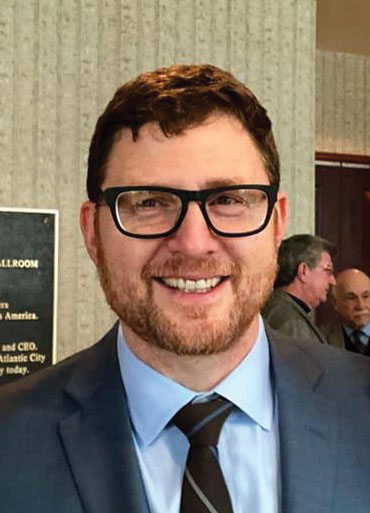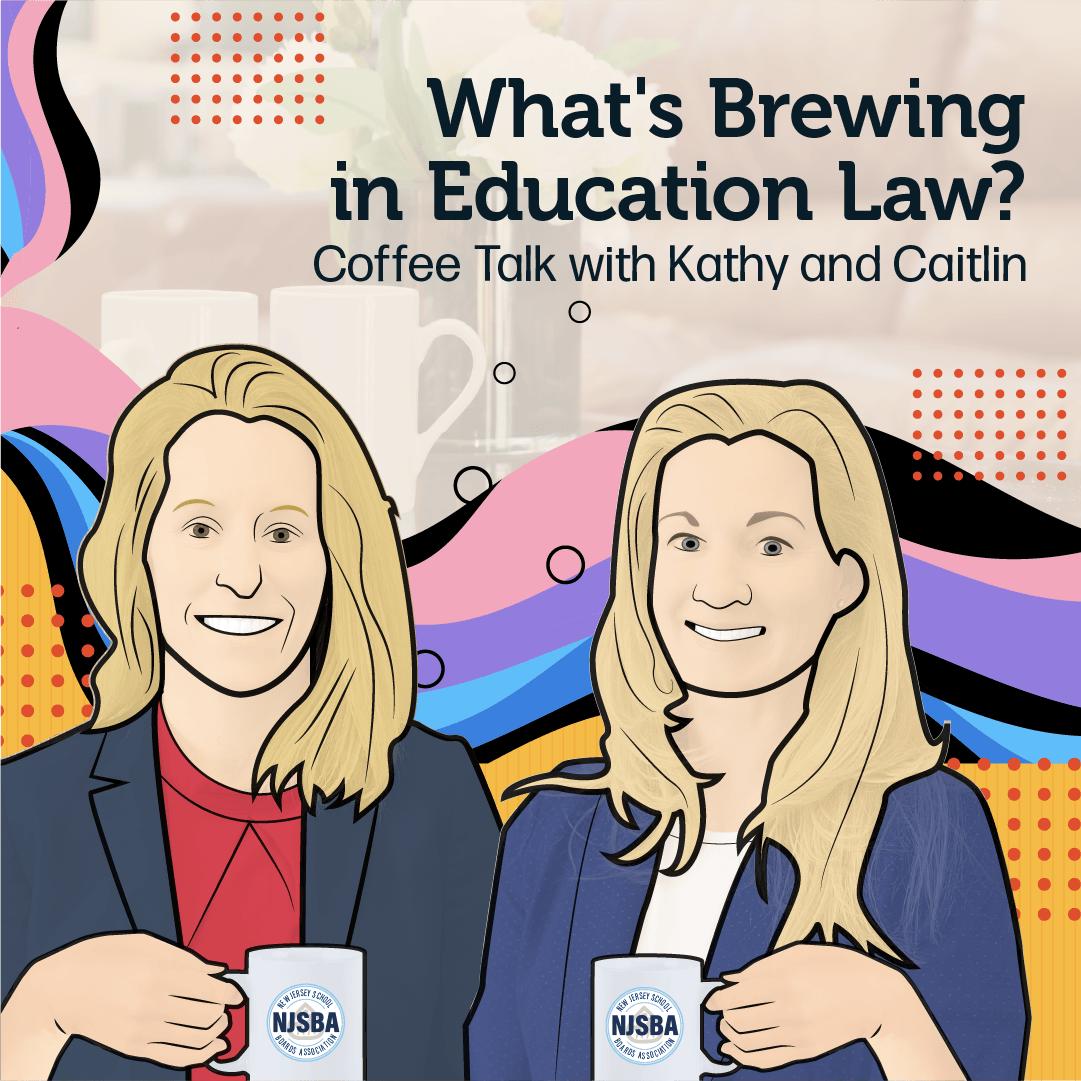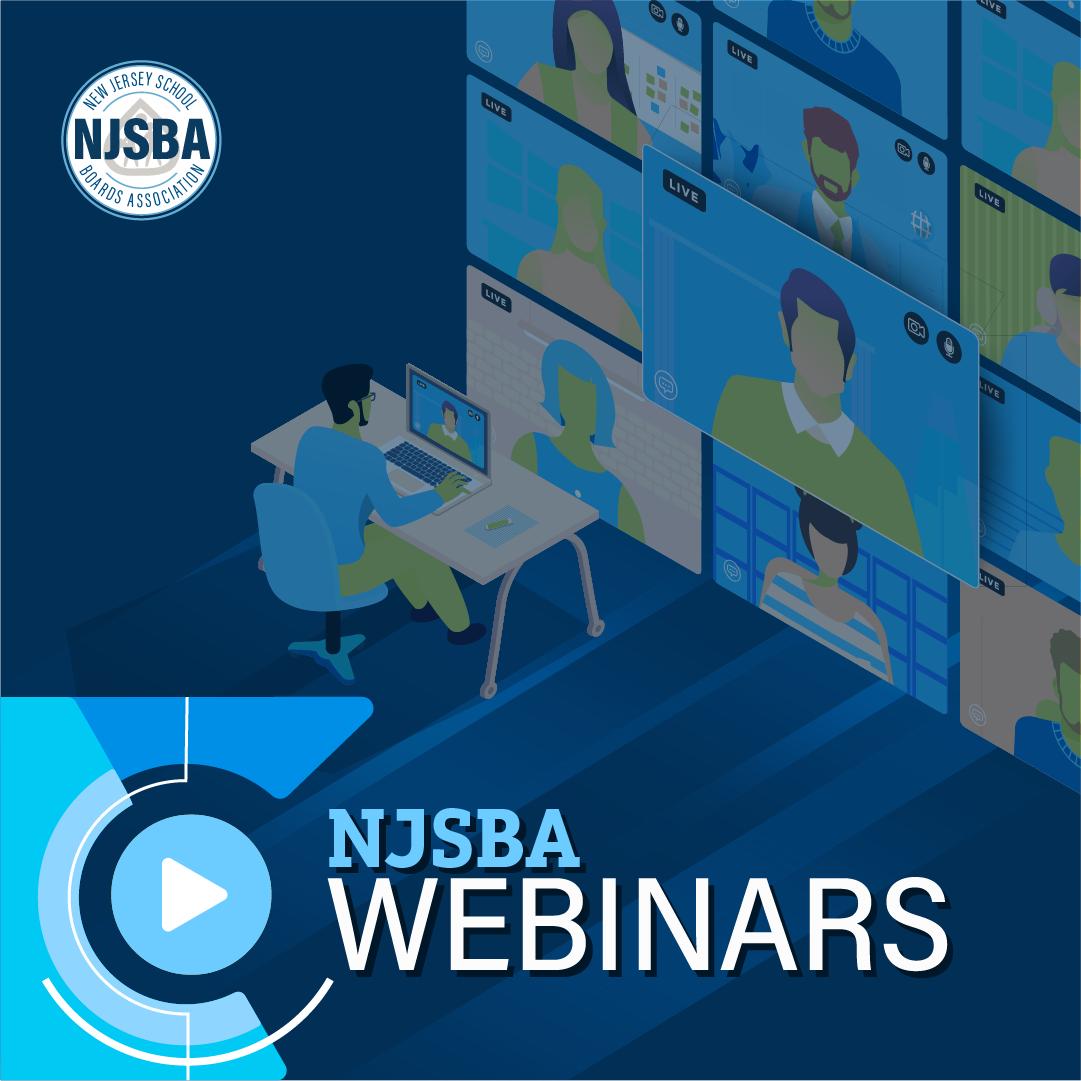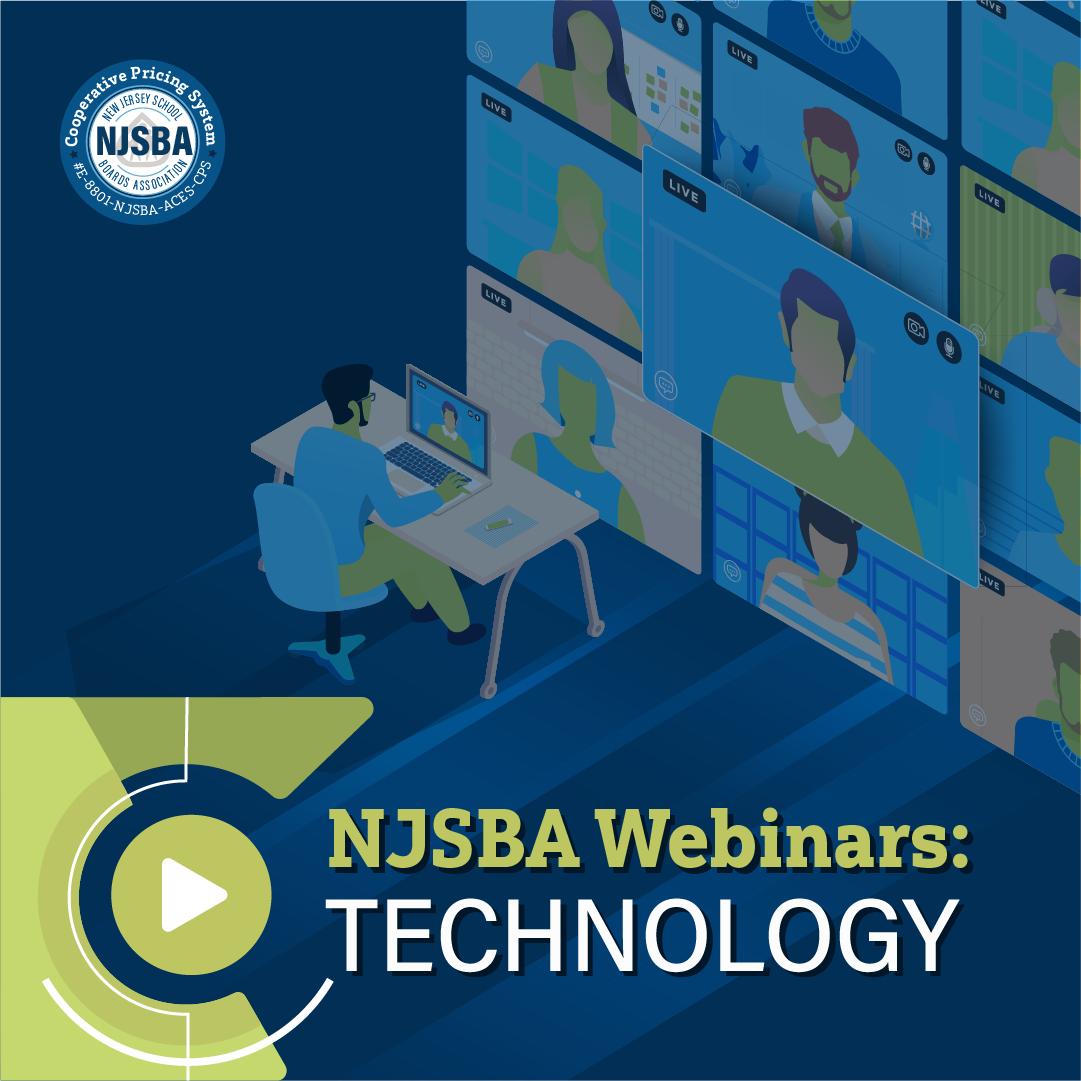
Asking an educator for their definition of digital citizenship can be a tricky endeavor.
“That’s a loaded question; there’s a lot there,” said Timothy L. Trow, assistant superintendent for instruction at Gloucester Township Public Schools in Gloucester County. “I think the simple definition that I would give is the ability to consume and use digital content appropriately.”
The reality, however, is that fulfilling that goal is complicated.
Challenges to be Met First, the internet and its applications are vast and forever changing; what’s required to help students discern what they see or hear always changes.
“What constituted reasonable efforts at digital citizenship five years ago probably doesn’t constitute reasonable efforts right now,” said Randall Solomon, executive director of the Sustainability Institute, which runs the multifaceted Sustainable Jersey for Schools certification program. There’s always a social media platform of the moment, he explained, and each one increasingly sheds nuance and depth.
“The quality gets degraded, and the opportunity to understand the source gets degraded, because it’s so fast,” he explained. “It’s almost like mindless browsing, but you’re consuming information without taking time to think about the source.”
Second, the COVID-19 pandemic forced schools into remote learning, which drew students deeper into the online world — particularly social media. As Trow observed, the parameters for online use go far beyond school hours and one location. He recalls parents bringing printouts of their children’s instant messages from their bedroom desktop computers. That quaint act has gone the way of flip phones. “It’s so ubiquitous in the kids’ lives,” he said. “It’s really hard to separate home from school, and everyone’s trying to figure out how to do that.” It’s not uncommon for in-school fights, he said, to stem from social media.
“The impact of social media and the backlash of that was so heavy during the pandemic, that getting kids to come out from behind the technology and be face-to-face has been much more difficult than expected,” said Tiffany Lucey, PreK-12 supervisor of education technology, careers, and life skills at Toms River Regional Schools in Ocean County.

Lucey is not immune to the effects of an online world. “Today, I was talking about this interview with one of my teachers and said, ’I’m excited to have this interview, but it’s funny: it’s on the phone and I’m so used to at least doing Google Meet. It’s going to be a little strange. I don’t really talk on the phone anymore, even with my friends. We want to see each other’s faces, because we need that personal connection ’”
Welcome to 2023, where that longtime staple of basic communication — the telephone call — is an exotic delight.
But the best tool for the job, Lucey said, isn’t always what’s new. Giving kids various educational opportunities — problem-based and hands-on — is essential to re-engaging them amid so much social media. “Sometimes, technology can foster breaking through some of those barriers by offering children alternate means of communication — and sometimes it can hinder it,” Lucey said. “Having a blend of ways [for] students to express their voice and choice in the classroom and in their learning, I think, makes a huge difference.”
Emily Bonilla, vice principal at Essex County Donald M. Payne Sr. School of Technology in Newark, has seen the way kids learn and communicate change. She feels schools using old practices to solve new problems is irresponsible. “When I think about literacy and literacy standards,” she said, “I’m now thinking that it’s just as important to understand the internet and how it works and gratification just as much as basic level grammar skills.”
“The technology is going to continue to advance,” said Christy Biedron, director of education for Junior Achievement of New Jersey, which provides free remote learning experiences to teachers and parents. “Rules and regulations and curriculum can’t keep up. What’s really key here is we continue to promote critical thinking and awareness and digital safety.” Order is required, though. For Christine Masi, supervisor of technology integration PreK-12 for Morris School District in Morris County, technology tool(s) will never replace the teacher. This year, the district has returned to embracing blended learning and station rotation.
“We don’t want to walk into a classroom and see students on devices for extended periods of time,” she said. “We believe in human relationships, face-to-face instruction and technology tools that enhance learning; it’s about finding the right balance.”
“The goal is to develop students who can solve problems,” Lucey said. “When we really look at the skills for students, that hasn’t changed. How they get there may be enhanced.” It’s up to the district, she added, to understand that path and help kids down it.

Information, Please A big aspect of digital citizenship lies in students’ ability to differentiate news from propaganda and falsehoods. In early January, Gov. Phil Murphy signed S-588, which aims to improve the “information literacy” of New Jersey public school students, who need the “tools necessary to identify fact from fiction.”
The legislation allows the New Jersey Department of Education to develop a curriculum to help students “locate, evaluate, and effectively use … needed information,” including digital and visual media and text. Digital literacy is already being addressed — its importance is too great to neglect. Discussing sources of information, Bonilla said, inevitably summons cries of “fake news” and a “liberal agenda.” Ideological dog whistles hide a universal truth: “This is literacy skills,” she said. “We need to empower everyone to be critical thinkers.” After all, involvement in the digital world doesn’t end after the mortarboards get tossed skyward. According to Biedron, critical thinking is the skill employers covet most.
Programs abound to assist in teaching media literacy and other topics that loom with every click. Junior Achievement’s Tools for Success, Biedron said, offers career readiness skills to students and prepares them for the digital economy, including using digital tools in a professional manner (when to use social media at work) and digital ethics (what constitutes safe behavior online).
Sustainable Jersey, in partnership with the New Jersey School Boards Association and the state’s Department of Education, has developed best practices for digital citizenship that is an element of its Digital Schools Program certification program. Recommendations for defining digital citizenship include recognizing hate speech and cultivating news and media literacy.
Morris School District partnered with Neptune Navigate — the first school district in New Jersey to adopt the program — which provides an annually updated K-12 digital citizenship curriculum and addresses topics such as digital footprints, safety and security and media literacy, Masi said. “The modules or topics are the same,” she explained. “The content becomes different and appropriate for different grade levels.” Bonilla avails herself of several programs. Common Sense Media has “fantastic free resources, but they also have curriculums, lesson plans and activities for every single grade.” Factictious teaches students how to spot fake news. She also endorses PBS LearningMedia and MediaSmarts.
Schools need to take further initiative, too.

Creation and Collaboration In Gloucester Township, the middle school has incorporated coding and engineering into electives to show the productive appeal of technology beyond social media. “I find that kids, particularly adolescent students, they can be both cynical in one regard but also very much purpose-driven,” Trow said. “If you tap into that — into their sense of fairness and right and wrong — and engage them there, it’s amazing what they can do.”
Students at Frelinghuysen Middle School created a digital driver’s license as part of the process for students to earn their district-issued Chromebook. Not only did the exercise teach relevant digital citizenship skills, Masi said, the program encouraged students to make positive digital choices.
Payne’s social media team is student led. Bonilla isn’t worried. The students have the tools and the training, and they also understand that parents, students and county executives see what they post. “These students, they could go into a job with a Fortune 500 company working on their marketing campaign,” she said, “and I know they’re prepared.”
In helping children navigate a wired world, school districts participate in a game of perpetual catch-up. Students, Trow said, “adapt so quickly to whatever is coming, and we often adapt so slowly because we’re institutions, and it’s a big ship to try to change course with.” Even with structure, technology remains the apple in an educator’s Eden. Students, he added, find a way around school-erected filters to enjoy school equipment beyond its intended use, like streaming music during class.
Communication is essential. “I actually have a person in each building and hold meetings with them on a fairly regular basis as needed to really work through issues, provide them with training, things that they need to turnkey out of their buildings,” said Lucey of Toms River, which has more than 14,000 students in 19 learning facilities. The meetings also address issues that can impact classroom instruction. In January, a hot topic for Lucey was ChatGPT, the controversial (and free) artificial intelligence (AI) program that creates human-like text responses to prompts and requests, which she had read about in The New York Times. If you’re thinking this could serve as a homework machine, you’re not alone.
“I wanted to get it on their radar,” she said. “This is a thing and what does it mean for equity, inclusion, all of those things, because we’re always looking at the digital divide.” There’s also the issue of how it can be put to positive use in a classroom. “We do have to learn how to live with this, much like how we learned how to live with calculators,” Lucey said.
Payne relies on student input tech teams and digital learning specialists. The latter, according to Bonilla, consists of “teacher-leaders” who stay current on digital learning and compile tips and resources that are shared throughout the building.
“They also work with our community, so we’ll hold tech nights with parents,” she added. “We’ll bring in our prosecutor’s office. We’ll talk about social media and different things, but we’ll also talk about parent technology literacy.” Bonilla said many parents have only a basic grasp of technology, leading to a huge generation gap that must be bridged: the effect of technology and monitoring their children’s online behavior are foreign concepts. Administrators may also not be totally comfortable with technology because they’re separated from a school’s day-to-day activities.
“That’s why I think it’s really important to have people on the ground, in the classrooms, really leading those practices,” Bonilla said.
Establishing a Dialogue School boards have a role to play in teaching digital citizenship. Since they set the budget for devices and curricula and establish policies via resolutions, boards “can communicate to the superintendent and others what their priorities are,” Solomon said. “They can partner with parent-teacher organizations on protocol for kids to follow away from the classroom.”
“There needs to be constant communication and dialogue between all stakeholders,” Masi said.
Members can grasp the day’s issues by connecting with the district’s media specialists and librarians, said Biedron, a school board member in Bedminster Township, Somerset County. “If you start in reimagining your school library or media center, and the staffs that work there, they are really at the forefront to be the leaders in your district for digital citizenship, for information and media literacy — and in a lot of cases — school culture and climate and social and emotional learning,” she said.
She offered another idea for school boards: create a panel that promotes technology-related goals. Students must be part of it. “They are the users, and they’re the ones who are exposed to it. They can teach us a lot more than we can teach them in a lot of cases,” Biedron explained.
Technology will change. How we communicate will change. The art of listening will not.
“We want to have a conversation with kids,” Masi said. “We want to help them understand. We don’t want a child to feel like they’re not able to talk to us; everything starts with a conversation to help guide students to make positive digital choices.”
COVID-19 brought kids into a digital world earlier, causing school officials unanticipated aggravation and spurring them to make sudden adjustments. More than three years later, Lucey feels grateful and hopeful. “We can see a way forward, and we want to bring these kids along with us and embrace them — and this world that we live in — in a positive, sustainable future full of growth and opportunities for them,” she said.
Pete Croatto is a writer and author whose work has appeared in many publications, including The New York Times, AARP the Magazine, New Jersey Monthly and The Toronto Star.


